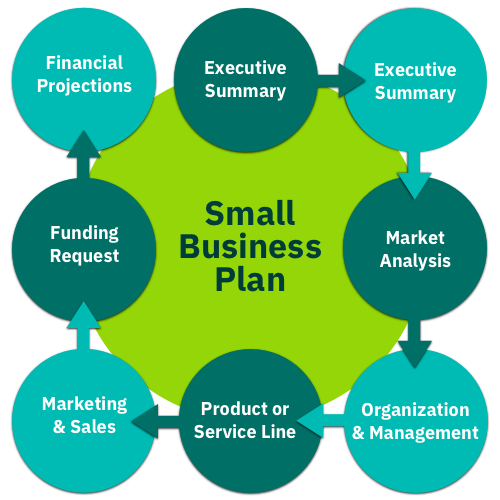Introduction: The Power of First Impressions
When you reach out to investors, you have seconds to grab their attention. An investment teaser is your first handshake. It’s a crisp, one- or two-page summary that highlights your venture’s appeal. A well-crafted teaser looks professional and sparks curiosity. Investors receive numerous pitches, so a sharp teaser demonstrates your seriousness and encourages them to learn more about your offering.
What Exactly Is an Investment Teaser?
An investment teaser is a brief, high-level summary of an investment opportunity. It runs just a page or two and teases the story behind your startup. The goal is to explain the basics (business concept, market, funding need) without revealing every detail.
Think of it as a trailer: it introduces your company and deal in outline only.
- First Step to Funding – It’s often the first document connecting your opportunity with investors.
- Multi-purpose – Teasers are used for various funding paths, including VC rounds, IPOs, partial sales, and more.
- Prepared by Pros or Founders – Banks or advisors often draft these, but founders also do so.
Short & Sharp – It’s always concise and easy on the eyes.
The Purpose Behind the Teaser
The teaser exists to spark interest without revealing too much. It shows investors the big picture so they can decide if they want more. You hint at your value proposition and key metrics while keeping sensitive details private. In practice, that means outlining growth or profits to excite interest but not disclosing your secret sauce. This balances interest and confidentiality. In short, a good teaser makes investors say, “Tell me more,” without needing an NDA upfront.
How It Differs from a Pitch Deck or Business Plan
A teaser is not a full pitch. It’s a one-page elevator pitch on paper. In contrast:
- Pitch Deck: This is your slide deck (10–20 slides) for meetings. It has details and visuals. You only share it when an investor is engaged and has time. After a teaser piques interest, you’ll present a deck. For example, one guide notes a one-page teaser wins meetings, but you’ll still need a detailed deck ready for follow-up.
- Business Plan/CIM: This is a comprehensive document for due diligence. It includes all the financial details and fine print. Investors usually ask for it only after NDAs and a serious interest. As one resource explains, after a teaser, an interested investor will often sign an NDA and receive a full confidential information memorandum.
In short, your teaser is the appetiser. The pitch deck is the main course. The business plan, or CIM, is dessert for those who stay to the end.
Anatomy of a Powerful Investment Teaser
A killer teaser hits all the key points without overload. Here’s what to include:
1. Company Overview
Provide a brief introduction to your startup and its mission. Summarise what you do and why it matters.
- Mission/Vision: One sentence on your company’s purpose.
- Value Prop: Explain what your product or service does.
- Highlights: If you have notable achievements (e.g., users, patents, partnerships), be sure to note them.
- Funding Ask: State what you’re raising (amount, stage).
This sets the context. Keep it punchy. The executive summary should act like a company snapshot.
2. Problem & Solution Snapshot
Define the problem you solve, then your solution. Use bullet points or short lines:
- Problem: What big issue or need are you tackling? (Be clear and specific.)
- Solution: How exactly do you fix it? Describe your product/service and how it works.
- Competitive Advantage: Why are you better than others? Note any unique technology or strategy that gives you an edge.
Spell out the why of your business. Investors must see the urgency of the problem and the strength of your solution.
3. Market Opportunity
Show the market size and trends. This convinces readers that the prize is worth going after. Include:
- Market Size: How big is the addressable market? (Dollar value, growth rate, etc.)
- Trends/Growth: Are there growing trends you ride? Evidence of demand.
- Positioning: Where you fit in the market. Who are the players, and where do you stand?
Investors need to see scale and potential. Cite relevant data (e.g. “$X billion market growing Y% annually”). Make it clear that numerous opportunities exist for your startup.
4. Financial Highlights
Offer a snapshot of key numbers: revenue, growth, profitability, and burn rate. Keep it top-line:
- Last year’s revenue (or current ARR).
- Recent growth rate or revenue trajectory.
- Significant cost or margin figures (e.g. gross margin).
- Runway or cash on hand, if relevant.
This should be high-level only. For example, “Last year: $2M revenue, 50% growth, 30% gross margin” (no granular financial statements). The goal is to show you have real traction or a clear path to profit.
5. Deal Structure (What You’re Offering)
Clarify exactly what you want from investors:
- Amount & Equity: How much money are you raising and for what share of the company?
- Use of Funds: What the investment will fund (hiring, product dev, marketing, etc.)
- Projected Return: Indicate the expected ROI or exit strategy.
- Investment Type: Are you selling equity or issuing debt? (Equity means selling shares; debt means a loan/bond)
- Terms: Any special terms (convertible note, SAFE, preferred, etc.), if appropriate.
Use plain language. For example: “Seeking $500k for 10% equity to fund product launch and team growth.” This finalises the picture of the deal
6. Contact Info + Next Steps
End with how to follow up:
- Contacts: List key individuals (e.g., CEO, founder, or CFO) and their corresponding contact details (email, phone).
- Call to Action: Suggest the next step. E.g., “Please reach out to set up a meeting” or “Download the pitch deck at [link].”
- Follow-up: Please note that you’ll send more details after an NDA is signed, if needed.
Make it clear and easy to connect. A teaser’s job is to prompt that next meeting, so give an obvious path forward.
Why Startups Need an Investment Teaser More Than Ever
Attention Spans Are Short
People process information quickly. One expert notes that you have roughly 8 seconds to grab attention. Investors skim cold emails and pitch decks fast. Your teaser must hook them instantly. Start with a headline or key stat that stops the scroll. If the first sentence isn’t strong, your email may go unread. Use the teaser to grab those precious seconds.
You Need to Stand Out in the Noise
Investors hear hundreds of pitches every year. Many founders send vague or sloppy materials and get ignored. A polished teaser signals you’re serious and prepared. It shows respect for the investor’s time. When others are “figuring it out on the fly,” you’re giving a clear story on one page. That one sheet can cut through the clutter and help your startup stand out from the rest.
Common Mistakes to Avoid in an Investment Teaser
- Too Much Information: Don’t overload your teaser with details. Skip lengthy charts or jargon. Investors should get just the highlights. As one guide warns, overloading with unnecessary detail is a big red flag. Keep it lean – include only the facts that make investors say “Wow.”
- Generic Language: Avoid hype and clichés. Phrases like “world-class” or “once-in-a-lifetime” turn readers off. Stick to facts and concrete claims. One expert advises sticking with concise, factual text and avoiding flashy hyperbole. Saying “Our solution is revolutionary” adds nothing; instead, show an actual metric or concrete advantage.
Not Tailoring to Investors: One-Size-Fits-All Teasers Fail. Research the person or fund you’re targeting. A VC and a bank care about different things: align your emphasis accordingly. For instance, growth metrics thrill venture capitalists, while stable cash flows attract angels or banks. Tailor every teaser to its audience.
How to Craft an Irresistible Teaser: Step-by-Step
Step 1: Know Your Audience
Before writing, ask: Who will read this? What do they care about? Learn the investor’s focus (e.g., sector, stage, geography). Then match it: if they invest in SaaS, highlight monthly users and churn. If they prefer hardware, show product prototypes and manufacturing plans. In other words, speak their language. As one advisor puts it, tailor your teaser to different investor types. A slight adjustment in data or wording can make a significant difference.
- Research each investor’s portfolio and mandate.
- Include metrics or terms they value (e.g., MRR for SaaS, users for apps).
Mention something specific (like “ideal fit for early-stage clean-tech funds”).
Step 2: Lead with the Hook
Put your strongest point upfront. Start with a headline or bullet that jumps out. It could be a significant number (“$5M in sales, doubling each year”), a striking stat, or a bold statement of purpose. Keep it short and punchy. One coach advises using a strong, intriguing title or first bullet to seize attention. Then back it up with key facts. Every sentence should reinforce that hook.
- Craft a compelling title or tagline (e.g. “1000+ customers in 12 months”)
- Use bullet points for highlights, not lengthy paragraphs.
Lead with the most impressive achievement or opportunity.
Step 3: Keep It Crisp and Visual
Your teaser must be easy to scan. Limit it to one page if you can. Use bullet lists and very short paragraphs – no long blocks of text. Add visuals, such as charts, icons, or graphics, to convey data at a glance. For example, a simple bar chart of revenue growth or a pie chart of market share can say more than words. A rule of thumb: one graphic can replace a thousand words.
- Use large fonts for numbers or section headers.
- Avoid clutter: leave plenty of white space.
- Use colour or bold to highlight the key stats.
- Ensure the design is professional (avoid using fancy fonts or gimmicks).
A clean, visual layout makes your teaser feel more digestible. Investors can quickly browse through and grasp the key points. Remember: you want them to say, “I get it,” in seconds.
The Role of the Investment Teaser in the Fundraising Funnel
- Top of the Funnel: First Touch. The teaser is often the very first piece an investor sees from you. It might arrive via a cold email, LinkedIn intro, or referral. In this phase, the goal is pure awareness. An intense teaser sparks curiosity, prompting the investor to request more information. It’s your opener.
- Middle of the Funnel: Building Interest. If the teaser is effective, an investor will request more details. They might sign an NDA and request a pitch deck or information memo. According to one source, after a teaser interests investors, the next step is to have them sign an NDA and receive a Confidential Information Memorandum. In practice, you’ll then share a detailed deck and begin the Q&A session. The teaser’s content will guide these discussions.
Bottom of the Funnel: Inviting the Pitch. When interest is strong, investors will want to meet you. A good teaser leads to a scheduled pitch meeting or call. By this point, the conversation centres on the specifics your teaser hinted at. In other words, a successful teaser effectively conveys the entire pitch. It turns a cold lead into a warm meeting.
Digital Distribution: Where and How to Share It
- Email Outreach: Attach the teaser PDF to targeted emails. Cold emailing? Keep the cover note brief and refer to the attached teaser. It’s easy for investors to scan a one-pager in their inbox quickly.
- LinkedIn and Social: You can message or post a version on LinkedIn, especially for early-stage deals. A concise summary with a link can reach your network. (Just be careful with confidentiality.)
- Intro Networks: Use angel groups or fundraising platforms. Some startup networks let you upload your one-pager. Get mutual connections to share it.
- PDF vs. Webpage: A PDF is straightforward and shareable. It’s static but trustworthy. A webpage (or interactive PDF) can be more dynamic – you can update it in real time and even track visits. Use a webpage if you plan to broadcast widely or expect multiple updates. Otherwise, send a polished PDF to each investor. Either way, keep the content identical.
In short, go where investors are. Email remains the primary channel, but posting on LinkedIn or using a drip campaign via an introduction can expand your reach.
Real Examples That Worked (and Why)
- Land Development Fund Teaser: A small fund manager created a one-page teaser with bold visuals – a chart of historical returns and large font for the fund’s performance. They also listed their track record and fund structure succinctly. This teaser immediately got investors’ attention and led to meetings. The fund closed its raise ahead of schedule. The lesson: clear design and a big, interesting stat can cut through.
- Tech Startup Snapshot: (Paraphrasing a common scenario) A SaaS startup put its key metrics – 200% ARR growth and 30% churn rate – in a short deck. It was reviewed quickly by investors, who then requested a follow-up call. This shows that even brief metrics can spark discussion. (The point here is that real companies succeed by highlighting traction in a simple teaser.)
- Pattern: Projects RH notes that many companies have seen success by following a structured teaser approach. The common factor is clarity: they all communicated the value proposition and used concise, factual content.
These examples underline that an intense teaser gets you in the door. Visuals and facts that resonate with investors are what make them effective.
Final Thoughts: Your Teaser Is Your Trailer
Your investment teaser is like the movie trailer for your startup. It sets expectations and excites investors about the whole story. Spend time to make every line count. Test your teaser on mentors or investors: did they immediately get curious? Did they ask, When can I see more?” If not, refine it.
Remember, you may only send this one document initially. A clean, concise, and compelling teaser can significantly increase your chances of landing meetings. Think of it as your first (and sometimes only) pitch. Make it so good that investors say, “tell me more.”
Respond to feedback, update it as needed, and continually improve it. A killer teaser can accelerate your fundraising – it’s worth the effort.
Your capital raise starts with that one sheet. Make it sharp, make it count, and let it lead you to the next pitch.







